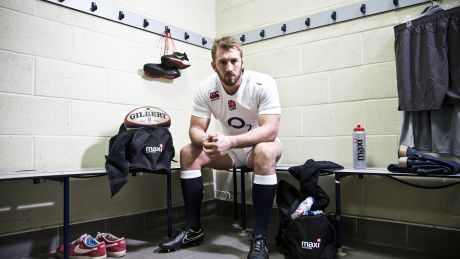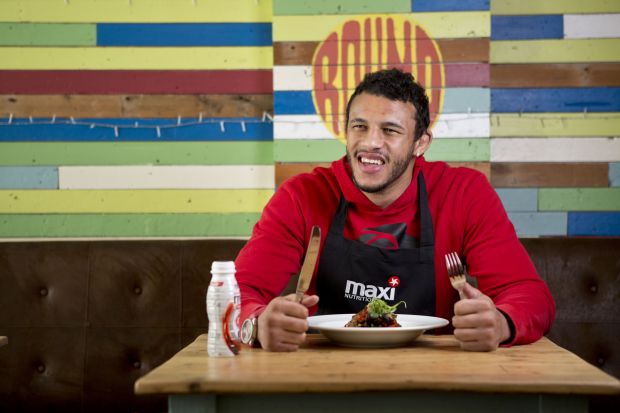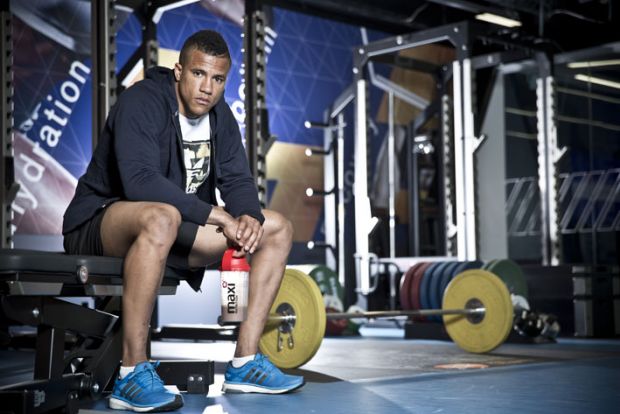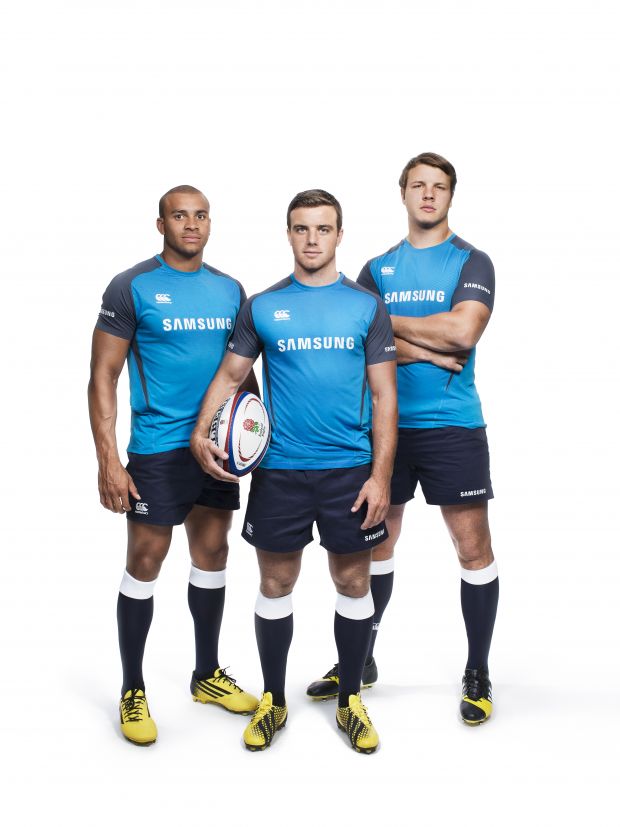
1. Start Stretching Post-Workout
Jonny May (outside centre): “You can only improve your fitness if you’re training often, and you can only train often if your muscles are relaxed. That’s why I always stretch at the end of each day to keep my muscles in top condition and to make sure my body is never tense, especially as tension is speed’s worst enemy. My advice is to work on anything that feels tight. If you’re not seeing the improvements you want from your workouts then you’re probably not stretching enough.”
Marlon Yarde (winger): “Every day I do a yoga sequence to help mobility. I focus on my posterior chain especially, by using a lot of deep squat positions and plenty of glute-focussed positions.”
Top tip: The posterior chain refers to your calves, hamstrings, glutes and long back muscles. Whether you’re an Olympic-level athlete or a weekend warrior, it’s vital you keep your posterior chain supple as these muscles massively affect your everyday health and posture, not just your sporting performance.
2. Eat Hard, Sleep Harder
Billy Twelvetrees (inside centre): “I always smash a spaghetti carbonara or something big after a game or a heavy workout. Getting the recovery period of your training right is vital if you want to keep performing at your best so eat plenty of protein and drink your electrolytes (like Lucozade Sport)."
Yarde: “Without doubt recovery nutrition and hydration are just as important as the exercise itself.”
Alex Corbisiero (prop): “The guy who recovers well is the one who succeeds. You can train as hard and as smart as you want but you need to recover properly. That means eating good amounts of the right food and sleeping at least eight hours each night to ensure you’re ready to train again as soon as possible. You only see gains by consistently training, and you can only train consistently if you recover well."
Joe Launchberry (second row): “I don’t eat much on match day before the game, but I go mental post-game and eat much more than usual because replenishing after intense exercise is a critical part of recovering and improving.”
Get the Coach Newsletter
Sign up for workout ideas, training advice, reviews of the latest gear and more.
Top tip: “Make sure you get a ton of sleep in the two days that follow intense exercise to recover and ensure you get those gains you worked so hard for,’’ says Launchberry.

3. Fire Up the Glutes
Corbisiero: “You need to fire up the muscles before heading into a workout in the same way you’d preheat an oven before throwing in a massive roast dinner. This is called ‘pre-activation’ and ensures your muscles become more responsive, which means you get a better workout and you can recover easier. I’ve had tons of injuries in my career, so a good warm-up before any session helps me look after myself. I normally spend ten minutes or so on a circuit to get my glutes fired: single-leg Romanian deadlifts, calf raises, single-leg and double-leg squats, and then I finish with some band-resisted shoulder exercises just to get everything fired up and moving.”
May: “I’m with Alex on that – warming up is so undervalued. As well as the recovery benefits, properly activating the muscles means a more efficient workout, which means better gains.”
Top tip: Scientific research suggests that to improve your performance in the long run, you need to make stretching a habit. Make sure you keep it up for at least a month to really see the benefits!

4. Embrace the Pain
May: “Whether you’re getting ready for a new sports season or you're starting a new gym programme, you need strong legs to give you a strong foundation. Squats are great not just to build your legs up, but to get used to those horrible first few weeks of pain and to get you ready for the hard work ahead. I feel in a good place mentally when my legs feel strong physically.”
Twelvetrees: “That’s a great point – if you want to push your physical boundaries then you need to a solid base to work from. Do lots of running, strength and power work in your lower limbs aided by plenty of good hydration with lots of carbs and protein. You’ll pretty much see the gains straight away, just as long as you don’t forget to stretch.”
Yarde: “Definitely get comfortable feeling uncomfortable early on so it’s not a new feeling later in your season or exercise programme.”
Courtney Lawes (second row): “Embrace the pain, don’t just try to survive it.”
Chris Robshaw (flanker and England captain): “Push yourself now and think about what success it will bring in the future.”
Twelvetrees: “Keeping preseason training short and steady will keep you coming back for more. A lot of people mistakenly do a big long session early on and then don't come back for a few days, if not a few weeks. You can get a lot done in a short space of time so a good 20 or 30 minute workout is plenty to begin with. Bodyweight exercises are the best way to get in shape early on. Trying to lift as heavy as you can for low reps has its place but you’ll just end up sitting around not doing much while you recover. If you’re a beginner it won’t really get you anywhere. Doing lots of bodyweight exercises, even just press-ups, lunges and squats, for high reps are much more fun and effective to start with.”

Top tip: It’s important to understand the difference between injuring yourself and pushing yourself to a productive level. The players aren’t telling you to train until you hurt yourself, they are saying that you will probably feel sore at the beginning of your season/programme but this is a good thing because you will notice early gains. If you embrace this feeling of discomfort early on then the rest of the season/programme will be more manageable.
Jonny May, Marland Yarde and Billy Twelvetrees are ambassadors for Lucozade Sport. Courtney Lawes and Chris Robshaw are ambassadors for MaxiNutrition. Alex Corbisiero is an ambassador for Zizzi. Joe Launchberry is an ambassador for Samsung.
Sam Razvi wrote for Men’s Fitness UK (which predated and then shared a website with Coach) between 2011 and 2016.
